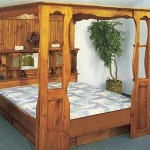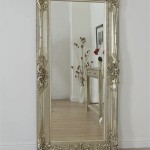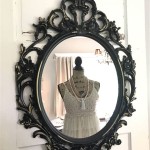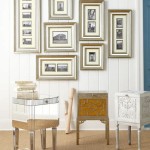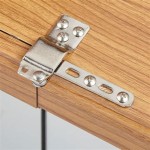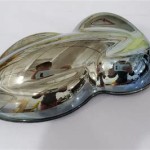Fixing a Heavy Mirror to a Plasterboard Wall
Mounting a heavy mirror on a plasterboard wall presents unique challenges. Plasterboard, while convenient and cost-effective, doesn't offer the same inherent strength and stability as solid walls. Therefore, specialized techniques and hardware are required to ensure the mirror is securely fastened and avoids damage to the wall.
1. Assessing the Wall and Mirror
Before beginning the installation, carefully assess both the mirror and the wall. Determine the weight and dimensions of the mirror. Heavier and larger mirrors will require more robust fixing solutions. Inspect the plasterboard for any existing damage or weaknesses. Consider the wall's location and potential obstructions, such as electrical wiring or plumbing, behind the plasterboard.
2. Locating Wall Studs
Whenever possible, anchoring the mirror into wall studs provides the most secure mounting. Wall studs typically run vertically at 16-inch intervals. Use a stud finder to locate the studs behind the plasterboard. Mark their positions lightly with a pencil. If the desired mirror placement doesn't align with the studs, alternative fixing methods will be necessary.
3. Utilizing Appropriate Fixings
Several fixing options are available for securing heavy mirrors to plasterboard. The best choice depends on the mirror's weight and whether the fixings can be anchored into studs.
Heavy-Duty Wall Anchors: These specialized anchors, such as toggle bolts or molly bolts, are designed to distribute weight across a larger surface area behind the plasterboard. They are particularly suitable for heavy mirrors when stud placement is not ideal.
Hollow Wall Anchors: These anchors expand behind the plasterboard, creating a secure grip. They can be used for medium-weight mirrors when attaching to studs is not an option.
Mirror Adhesive: Specialized mirror adhesives can be used in conjunction with mechanical fixings, or in some cases, as the primary mounting method. Always consult the adhesive manufacturer's instructions for weight limitations and proper application techniques.
Screws Directly into Studs: This is the most secure method when studs are conveniently located. Use screws specifically designed for wood and long enough to penetrate the stud significantly.
4. Preparing the Wall
Once the appropriate fixings are selected, prepare the wall surface. Mark the exact position of the mirror and the location of the fixings. If using anchors, pre-drill pilot holes of the appropriate size for the anchors. Ensure the pilot holes are deep enough to accommodate the anchors fully.
5. Mounting the Mirror
Carefully lift the mirror into position, aligning it with the marked locations. If using anchors, insert them through the pre-drilled holes and tighten them according to the manufacturer's instructions. If screwing directly into studs, drive the screws firmly into the studs, ensuring the mirror remains flush against the wall. If using adhesive, apply it as directed by the manufacturer, ensuring adequate coverage and even distribution. Support the mirror until the adhesive sets fully.
6. Safety Considerations
Safety should be paramount throughout the installation process. Always wear appropriate safety glasses and work gloves when drilling and handling fixings. When lifting the mirror, enlist assistance to avoid strain and potential injury. Use the correct tools and follow manufacturer instructions for all materials and equipment. If the mirror is exceptionally heavy or if the installation presents complex challenges, consider consulting a professional handyman or contractor.
7. Choosing the Right Mirror Hanging Hardware
The hanging hardware on the back of the mirror is just as important as the wall fixings. Ensure the hardware (D-rings, wire, or cleats) is rated for the weight of the mirror. Heavier mirrors might require more robust hardware than lighter ones. The hanging hardware should be securely attached to the mirror frame and positioned to distribute the weight evenly.
Proper planning and execution are crucial for securely mounting a heavy mirror on a plasterboard wall. By carefully assessing the situation, choosing the right fixings, and following proper installation techniques, the mirror can be enjoyed safely and securely for years to come.

Hang A Mirror On Plasterboard Wall Soraya Interiors

Hanging Heavy Mirror On Plaster Walls 6 Steps With Pictures Instructables

How To Hang A Mirror On Plasterboard Wall Soraya Interiors

How To Hang A Heavy Picture On Plasterboard Wall

Plasterboard Wall Fixing Kit Mirrors Exclusive

Gripit Review How To Hang A Heavy Picture On Plasterboard Wall 2

How To Hang Heavy Stuff On Plaster Walls Molly Bolts
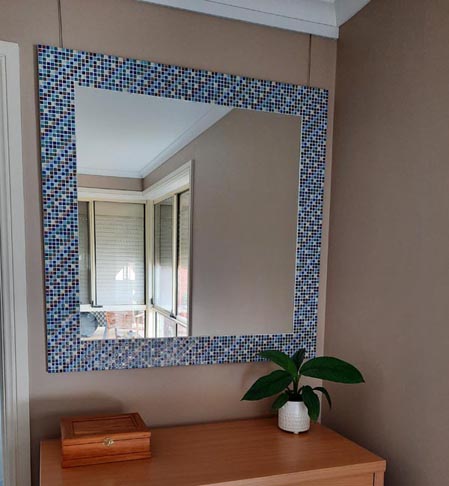
How To Hang A Very Heavy Picture Or Mirror The Best

How To Hang Items On A Plasterboard Wall

How To Hang A Large Or Heavy Mirror

